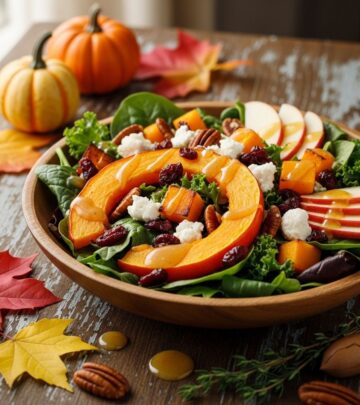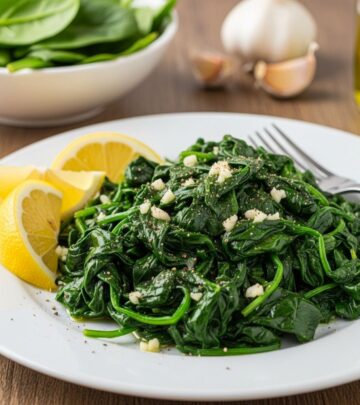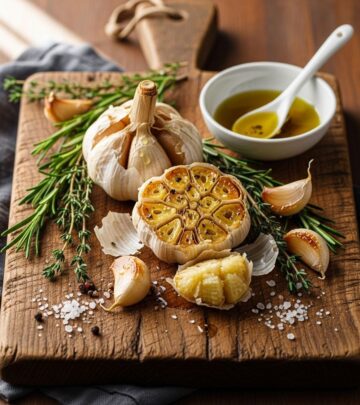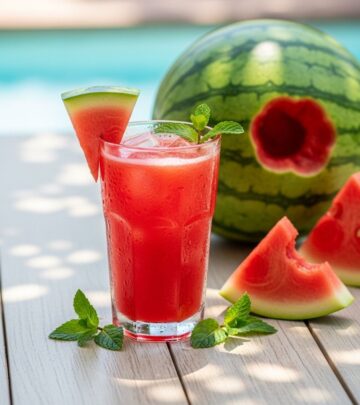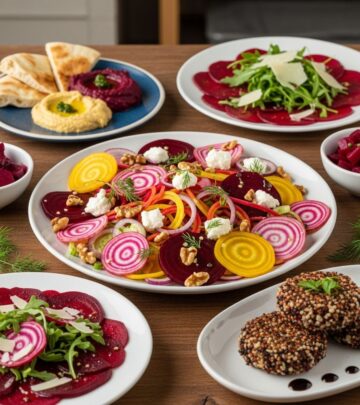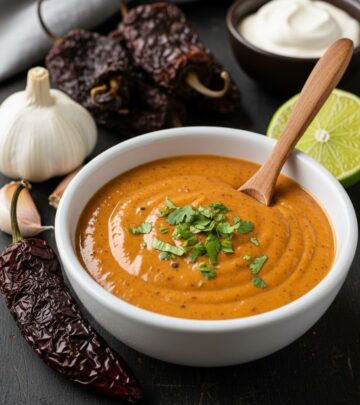How to Make Fresh Ginger Tea: Simple Recipe, Variations, and Tips
Enjoy a warming infusion that supports digestion and adapts to any flavor preference.
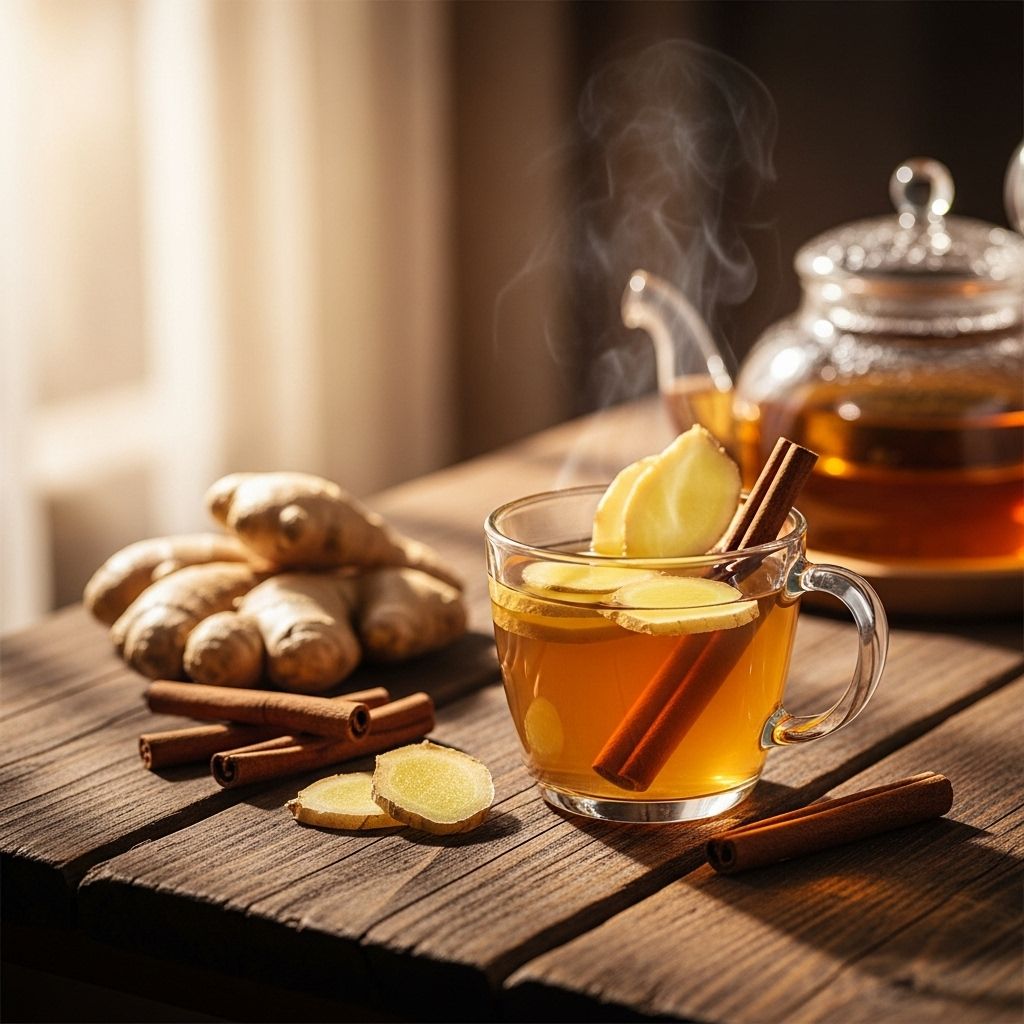
How to Make Fresh Ginger Tea
Fresh ginger tea is a warming, soothing beverage that is simple to prepare at home. Its vibrant, spicy flavor offers both comfort and wellness benefits, making it an ideal choice for cold days, relaxation, or as a gentle remedy for an upset stomach. Below is a step-by-step guide for making the basic ginger tea recipe using whole ginger root and water, inspired by time-tested kitchen techniques.
Ingredients
- 1-inch piece fresh ginger root (for every 1 cup of water)
- Filtered water
- Optional: honey or maple syrup, lemon slices or fresh lemon juice
Instructions
- Prepare the ginger: Wash a 1-inch piece of ginger root thoroughly. No need to peel the ginger unless you prefer to. Slice the ginger thinly to maximize flavor extraction.
- Simmer: Combine the sliced ginger and water in a small saucepan. For each serving, use about 1 cup (240 ml) of water and one 1-inch piece of ginger. Bring the mixture to a gentle simmer and let it cook for 5 minutes. For a stronger, spicier tea, simmer for up to 10 minutes.
- Strain: Pour the hot liquid through a mesh strainer to remove the ginger slices. Place the strainer over your mug for convenience.
- Sweeten and garnish: Add honey or maple syrup to taste, and garnish with a lemon slice or squeeze of lemon juice if desired.
- Serve: Enjoy the tea hot, either as a daily ritual or a comforting treat on chilly days.
Tip: This recipe easily scales for multiple servings. Prepare a larger batch and store leftovers in the refrigerator for up to four days. Reheat gently or enjoy chilled.
Ginger Tea Variations
Basic ginger tea is delicious and versatile. By adding spices, herbs, or citrus, you can create numerous flavor profiles. Here are some popular ginger tea variations you’ll enjoy experimenting with:
- Fresh Turmeric: Add a 1-inch piece of sliced fresh turmeric root to the pan along with ginger. Turmeric brings a warm, earthy undertone and natural yellow color to the tea.
- Cinnamon Stick: Simmer a cinnamon stick with ginger for a spiced, aromatic infusion perfect for autumn or winter.
- Citrus: Add two strips of orange peel while simmering, or garnish the finished tea with an orange round for a citrusy twist.
- Herbs: After simmering and with the heat turned off, add a sprig of fresh thyme or a handful of mint leaves to the hot water. Cover and steep for 5–10 minutes before straining. Mint offers cool refreshment, while thyme gives depth.
Feel free to blend these variations, such as combining ginger, turmeric, and cinnamon, or try your favorite herbs and spices. Ginger tea is highly customizable to suit your taste and mood.
Health Benefits of Ginger Tea
Ginger tea is prized not only for its flavor and warmth but also for its wellness-promoting qualities. Drinking ginger tea may offer the following health benefits:
- Digestive Relief: Ginger is well-known for easing nausea, indigestion, and stomach discomfort.
- Anti-Inflammatory Properties: The bioactive compounds in ginger root, such as gingerol, help reduce inflammation throughout the body.
- Immune Boosting: Ginger’s antioxidants promote a healthy immune response, especially during cold and flu season.
- Soothing Warmth: The warmth and spice of ginger can be comforting, helping to relax the body and mind.
Although ginger tea can be beneficial, it’s best to consult your healthcare provider if you have specific medical concerns before adding it to your routine.
Tips for Making and Storing Ginger Tea
Maximize both the flavor and convenience of your ginger tea experience with these practical tips:
- Adjust the strength: Simmer longer for bolder taste, or reduce ginger quantity for a more delicate brew.
- Use leftover ginger: To save time, slice extra ginger and freeze portions for future tea-making.
- Make ahead: Multiply the recipe ingredients to create a large batch. Refrigerate leftovers in glass jars for up to four days.
- Vegan option: Sweeten with maple syrup instead of honey for a completely plant-based beverage.
- Fine strain: Use a fine mesh strainer to thoroughly remove ginger pieces and any added pulp from citrus or herbs.
Frequently Asked Questions (FAQs)
Q: Should ginger root be peeled before making tea?
A: No, peeling is not necessary for fresh ginger tea. Just wash the ginger well and slice it thinly. Thin slicing increases surface area for better flavor extraction.
Q: Can ginger tea be made in advance and stored?
A: Yes. Brew a large batch, let it cool to room temperature, then transfer to glass jars or airtight containers. Store in the refrigerator for up to four days. Serve chilled or gently reheat, as preferred.
Q: Is ginger tea vegan?
A: Ginger tea itself is naturally vegan. Sweeten with maple syrup instead of honey to keep it 100% plant-based.
Q: How do I freeze ginger for later use?
A: To prepare ginger for future tea, slice it thinly and freeze in single layers or small batches. Alternatively, freeze whole ginger root for cooking versatility. Use frozen ginger directly in recipes, no need to thaw.
Q: Can other flavorings be added?
A: Absolutely. Ginger pairs well with turmeric, cinnamon, mint, thyme, citrus peels (orange or lemon), and various herbs and spices. Simmer your chosen add-ins with ginger for extra flavor.
Ginger Tea Nutrition Overview
| Nutrient | Approx. Value (per serving) |
|---|---|
| Calories | ~10–20 (without sweetener) |
| Sugar | 0g (unless sweetened) |
| Fiber | 0g |
| Caffeine | 0mg |
Note: Nutrition information is approximate and varies by how much sweetener you add. Ginger tea is caffeine-free and low in calories.
Troubleshooting and Customization Tips
- Too strong? Reduce the simmering time or add more water after straining.
- Too weak? Simmer longer, use more ginger, or allow ginger to steep after turning off heat.
- Flavor balance: Adjust sweetener and citrus to taste. Try combining ginger with different herbs for signature blends.
- Batch brewing: For frequent tea consumption, keep pre-sliced ginger in the freezer or refrigerate a large batch for convenience.
Serving Suggestions
- Seasonal enjoyment: Ginger tea is especially comforting during cold months, but its bright flavor works well year-round. Try iced ginger tea in summer.
- Wellness rituals: Enjoy ginger tea as part of your morning routine, after meals for digestion, or in the evening to wind down.
- Pairings: Serve alongside light snacks, breakfasts, or with a dessert for a spicy contrast.
Creative Ginger Tea Combinations
Expand your ginger tea repertoire with these creative blends:
- Lemon Ginger Tea: Add fresh lemon slices while simmering, then strain and sweeten with honey for a classic comfort beverage.
- Ginger-Cinnamon Tea: Simmer a cinnamon stick with ginger, strain, and enjoy the warming spice blend.
- Mint Ginger Tea: Steep fresh mint leaves with ginger, either during or after simmering, for a refreshing twist.
- Orange Ginger Tea: Incorporate orange peel when simmering or garnish with an orange slice for citrus brightness.
- Turmeric Ginger Tea: Pair ginger with turmeric root for golden color and extra anti-inflammatory benefits.
Expert Advice and Reader Tips
- Adjust ginger amount according to personal tolerance for spiciness.
- Experiment with different herbs and citrus to discover your preferred blend.
- Always strain tea for smooth, pulp-free texture.
- Store leftovers properly and use fresh ingredients for optimal flavor.
Frequently Asked Questions (FAQs)
Q: Can I reheat ginger tea?
A: Yes; reheat gently in a saucepan over low heat or in a microwave. Avoid boiling to maintain flavor.
Q: Is ginger tea suitable for kids?
A: Ginger tea in mild concentration is generally safe for old enough children but consult a pediatrician for individual guidance.
Q: What’s the best way to serve sweetener?
A: Add honey or maple syrup to each cup individually so you can tailor sweetness. Both are classic choices for flavor and health.
Q: Does ginger tea help with colds?
A: Ginger tea’s warmth and mild anti-inflammatory properties can support comfort during colds and soothe the throat, but it’s not a substitute for medical treatment.
Conclusion
Making fresh ginger tea is a simple joy that brings warmth, flavor, and wellness to your kitchen. Its versatility encourages creativity, while its straightforward preparation means anyone can enjoy it. Take these classic instructions and variations and make ginger tea your own—whether you prefer it milder or spicier, solo or infused with herbs. Share your favorite blends and tips to inspire fellow tea lovers to embrace this rewarding ritual.
References
Read full bio of Sneha Tete

